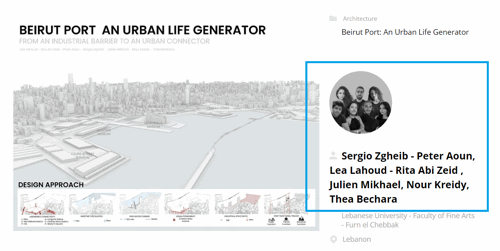National Multisectoral Supply Center

Idea projektu
The Haitian government aspires to develop a National Multisectoral Supply Center (CNAM) to promote access to affordable products for the population. These products are sold wholesale, and only licensed dealers collect them for local distribution.
Located just before the Haitian-Dominican border, on a stretch of land 20 squares east of the sea (site to be located on Google Earth with the professor's approval).
Popis projektu
The National Multisectoral Supply Center (CNAM) is envisioned as a modern and efficient logistics hub designed to support the storage, distribution and management of essential goods across multiple sectors in Haiti. This facility aims to improve supply chain efficiency, ensure the availability of essential resources and support national economic growth.
Opposite, I have placed a cafeteria that will be able to serve both customers and workers by offering them a panoramic view of the cultural and architectural diversity that surrounds them.
Technické informace
The National Multisectoral Supply Center (CNAM) is located in a hilly and green landscape, where modern architecture harmoniously dialogues with the surrounding nature. Its deliberately curved design echoes the soft shapes of the relief, creating a visual fluidity that blends perfectly with the natural setting.
From a technical point of view, the building is based on a robust metal frame, combined with concrete block walls, guaranteeing structural strength, durability and adaptability to local climatic conditions. On the facade, the use of wood reinforces the ecological identity of the project, providing visual warmth and a more direct connection with the natural environment.
The large glass windows promote an abundance of natural light, transforming the interior spaces into places bathed in light, where the working atmosphere is both dynamic and soothing. This architectural choice reduces energy consumption, while providing optimal comfort to the occupants.
The roof, equipped with solar panels, demonstrates my commitment to sustainability and renewable energy. This initiative aims to reduce the building's carbon footprint and ensure partial energy autonomy, by exploiting natural resources to meet the center's daily needs.
With a view to optimizing logistics and rapid intervention, heliports are integrated into the roof. These will allow efficient supply by cargo heliport, thus reducing dependence on road infrastructure in the event of blockages or crises. In addition, these platforms will offer aerial distribution capacity, facilitating emergency humanitarian and health interventions, in particular for the rapid delivery of medicines, food or medical equipment to hard-to-reach areas.
Each element of the CNAM has been designed to combine performance, functionality and respect for the environment, by integrating ecological solutions at each stage of its design.
Outside, the parking lot is designed in an optimized manner, guaranteeing smooth management of vehicle and truck parking. A road runs along the complex, facilitating logistical access and circulation while maintaining the overall harmony of the site. The landscaped areas, carefully integrated, are composed of trees and vegetation selected to promote a pleasant microclimate, thus creating a calm atmosphere conducive to concentration.
This project, which I proudly sign, is a model of integration between contemporary architecture and respect for the environment in Haiti. It embodies a sustainable vision, where each design choice is an aesthetic, functional and responsible response to current development challenges.














